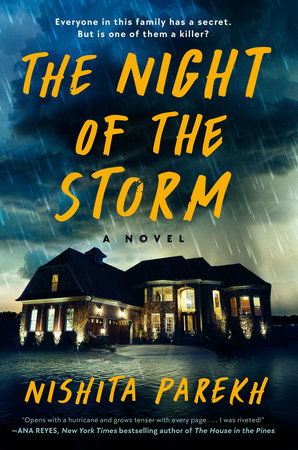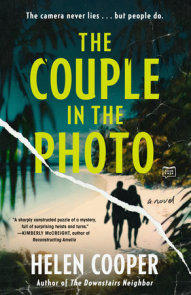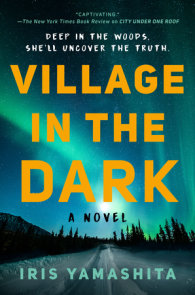READERS GUIDE
Note: These discussion questions contain spoilers! We suggest you finish the book before you read through them.1. At the beginning of the book, Jia’s lawyer, Hanna, tells her, “There is no margin for error.” And, later, Jia muses, “Life mirrored Chutes and Ladders. A single role of the dice destroyed everything.” How do these statements resonate with the characters’ plans and the way they play out?
2. It soon becomes clear that Jia and her family are keeping a host of competing secrets. Which secrets struck you as particularly harmful and which were merely misguided? Which secrets would you have kept and what would you have shared immediately?
3. Vipul insists his house is “impossible to flood,” but we soon see that he is incorrect, both literally and metaphorically. Jia is relieved when the hurricane is downgraded to a tropical storm before she learns the lack of movement will cause even more destruction. How does the path of the storm mirror the trajectory of the story?
4. The Night of the Storm gives us a deep dive into the stigma of divorce in the Indian American community, but we also see the fraught realities of seemingly intact families. Jia notes “an all-too-recognizable cocktail of shame, guilt, and defiance” etched on Seema’s face, and we hear her thoughts on “abusive mothers-in-law, enabling mothers, and supine husbands.” How does Jia compare the challenges of divorce to the difficulties of marriage? Do you have a different point of view?
5. Sibling relationships are important in the book and they often come loaded with comparison. When Jia arrives at her house, Seema expresses concern over Jia’s wet attire but also points out “none of my clothes will fit you.” Vipul and Raj debate whether Raj should find work as a technical writer to provide a more stable income for his family. How do you think these tensions and arguments might have played out had the events during the hurricane not happened? Do you think the siblings would have been able to see eye to eye one day?
6. Jia notes that “every Indian household, at any given moment, had enough food for three additional families” but Seema has the ability to “weaponize food.” We see the characters use food to comfort, reward, insult, shun, exclude, incapacitate, and even poison the others. How does the act of feeding become manipulative—and even destructive—in the novel?
7. Technology is deeply enmeshed in the theme of appearance versus reality that runs through The Night of the Storm. Social media is an essential tool for Seema to curate an enviable life, but it also provides Jia with clues about Asha’s true father. Text messages and internet searches also lead to revelations and misunderstandings. How do you see technology as both an asset and a liability in the novel and in your own life?
8. The author gives us several examples of romantic relationships in the novel, but none of them are ideal. Of Jia and Dev, Seema and Vipul, and Lisa and Raj, which marriage did you find most promising? Which was most tragic? What are the benefits and drawbacks of a love marriage versus an arranged marriage? Of marrying within one’s culture or outside it?
9. Jia posits that an unmarried woman, a divorcée, and an infertile couple know the road less traveled is most lonely. But it seems that no one in the story is exempt from loneliness. How do you see this emotion play out among the other characters?
10. Jia and other characters like Raj struggle with the weight of cultural and societal expectations. Is there an instance in which you went against the expectations of your family/society? How did you change as a result of that experience?




















